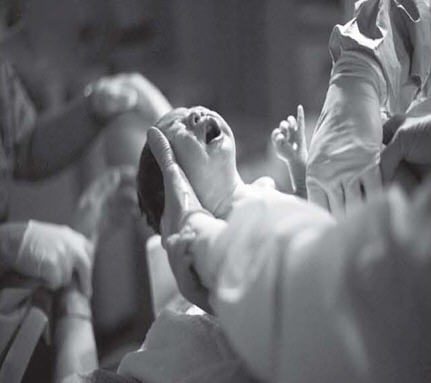Understand the difference between real and temporary problems.
By working on real problems, we can attain permanent happiness.
FROM RELATIVE TO REAL HAPPINESS

We need to first ask ourselves what kind of happiness we are looking for. Most people would agree that they seek a happiness that is permanent, ever increasing, that can be shared with others, and that offers variety. When these four characteristics are present we refer to it as real happiness; if they are absent it is relative happiness.
With these we can now analyze the types of pleasure we get in this world. Are they relative or real? We’ll probably find that almost all our experiences of happiness are relative because they are both impermanent and dependent on many other factors. For example, I may celebrate India’s winning a cricket match, but that happiness is relative because others are mourning their team’s loss. I may become happy by watching a movie, but that happiness wane safter some time, which makes it relatives because it’s impermanent. To revive my sense of happiness I may need to see another movie, or even while watching the same movie that brought so much happiness the first time, I am miserable because of something else that happened to me earlier in the day.
The question of how to become happy has intrigued people for millennia. If we had to boil down all the causes of unhappiness to one words, we could simply choose the word problems. We are constantly beset by problems. Even when we get what we want the existence of problems keeps us from remaining happy or feeling happiness fully. I once watched a friend relish samosas, his favorite food, at a college canteen. Just then, another friend arrived with the bad news that both of them had flunked their exams. The friend who was enjoying the samosas would have to repeat the year. The news hit him so hard that he lost all his enthusiasm for eating, and his samosas were finished by another samosa enthusiast. Happiness does not depend on objects like food but on a problem free mind. To understand the subject more deeply, let us now study problems as they relate to real and relative happiness.
RELATIVE AND REAL PROBLEMS

Like happiness, problems can either be relative or real. Solving relative problems brings us relative happiness; countering real problems brings us real happiness.
Relative problems “one man’s food is another man’s poison.” If you ask a dentist, “How’s business” and he replies, “Fantastic,” what conclusion can you draw? That the dentist’s prosperity depends on someone else’s dental problems. The dental problem is therefore relative it’s not universal. Neither does solving it bring happiness universally. For the dentist, the fact that people’s teeth rot is a blessing in disguise. Is rain a problem or a boon? For the umbrella seller, the rain is a benediction, and he wishes it would rain year round. Farmers also like the rain, but if it did indeed rain all year, their crops would be ruined. What about corruption, over population, unemployment, and the plethora of other issues plaguing the nation? Are these real all or relative problems? I once read an interview with a multi millionaire industrialist from Mumbai who was asked to name his heart’s deepest desire. He said he would like to go to a remote village in northern India and relax amid nature and with a minimum of necessities. It made me wonder: If you ask a simple villager living in northern India what his heart’s desire is, he would probably say he would like to make himself rich in Mumbai. The grass is always greener on the other side!
So it appears that where and how to live to one’s best advantage may be universal questions, they are no real problems but relative ones. What, then, are our real problems? For a problem to be real it has to fulfill three criteria: (1) it must be common to all; (2) no one should want it; (3) no one can avoid it.
Consider the various problems in this world and decide whether they are real or relative. The Vedic scriptures declare seven problems to be “real.” Solving them allows us to access real happiness happiness that is permanent and increases over time. Remember the Mahabharata call imploring us to seek the perfection of our human lives by solving our real problems and thereby attaining an eternal life of unending happiness.
THE PRIMARY PROBLEMS AND THEIR SOLUTIONS

The first of the seven real problem is birth. When a woman gives birth we say she is in labor. Labor is painful for both the mother and child. We hear of labor pain, not labor pleasure. When children are born they cry in pain as they inflate their lungs for the first time. If a child doesn’t cry, the doctor will assume the child is not breathing and slap it till he or she cries. So all who take birth suffer during the process. Everyone has to take birth, no one wants it, but no one can avoid it. The Srimad Bhagavatam, a Vedic epic describing the science of God, describes the plight of a child while in the womb of its mother. The Bhagavatam tells us that a child is constantly praying for deliverance from the cramped conditions in the womb. Fun fairs have roller coasters, and pregnant women are discouraged from riding the Ferris wheel because the unborn child wouldn’t be able to tolerate the pressure. Even if we were asked to sit inside a well furnished room for nine months, we would be miserable, craving fresh air and freedom. Being in the womb is like being inside a water filled sack.
Old age is the second real problem. It affects not only the physical body but brings emotional pain. Running up or down stairs may seem effortless for a teenager, but an elderly person often struggles with stiff bones and muscles, especially on stairs. Children generally have good digestion and can eat all kinds of foods, but the old have to think twice before eating anything. I once saw an old man cut his toenails. His vision was so bad that he struggled to properly align the nail cutter with his toe nail. Later, with help, the task was accomplished. Such a simple task! But it took this man over an hour.
Some may argue that old age is not common to everyone because many die young. But if you define old age as proximity to death, then we can understand that no one escapes it. If a ninety year old man is destined to live another ten years, while a five year old is destined to die tomorrow, the child is older than the ninety year old man. One may avoid the symptoms of old age, but proximity to death is real for everyone. And nobody wants to be near death.
Disease is another unavoidable real problem in this world. One may be cured of a particular disease, and medical science may even eradicate certain diseases like small pox, but no one avoids disease wholesale. Is there anyone who has never fallen sick? The flourishing pharmaceutical industry is evidence of the well being of disease. Diseases are common to all and nobody can avoid them.
Both old age and diseases are now common even among the youth. I have heard of seventeen year old young men suffering from arthritis and twenty four year old women dying of heart attack. Lower back pain is common among professionals who work at desks on computers for long hours. These things used to plague only the elderly, but the distinction between young and old is fading. Thanks to modern lifestyles, the miseries of old age and disease are catching up more quickly with the youth.
Death is the fourth real problem. “As sure as death” is an old maxim we all know. We may have the best doctors treating us with the best medicines in the best hospital, while we are being cared for by the best nurses. Yet despite all that we might still die. And when death comes, even a rich man cannot bribe it, a beautiful woman cannot charm here way out of it, a scholar cannot defeat death with his intelligence, and a strong man cannot wrestle death to the ground. As the Chinese say, “After the chess game, both the king and pawn lie in the same box.”
The Vedic scriptures tell us that the pain of death is equivalent to the stings of 40,000 scorpions. Sometimes people say, “I don’t fear death at all,” but this is just rhetoric. After a series of bomb blasts in Mumbai, people became fearful yet masked that fear in a show of resilience. Trains continued to fill with people going to work. It looked good from the outside, and one could easily be fooled into believing that these people don’t fear death. But one of my friends during this time forgot his large bag of Bhagavad gitas on a local train when he got off at Dadar station. Later, realizing his lapse, he took another train and rushed to Churchgate, the train terminus, only to discover a crowd gathered at a distance fearfully staring at his bag. Nobody had touched it. It sat there, surrounded by police officers and sniffer dogs. Our coolie friend walked up and took the bag, much to the surprise of the anxious passengers and the police. Death is especially painful because it means an end to all our attachments and possessions. Few face it bravely. Equipping ourselves with spiritual technology helps us face this inevitable and real problem maturely and soberly.
ADDITIONAL PROBLEMS
Besides these four problems, there are three more miseries: Miseries caused by (a) one’s body and mind, (b) other living entities, and (c) natural disturbances.
Innumerable examples from our daily lives reveal our fragile state at the hands of these three miseries. Psychiatric illness is now common; the female anopheles mosquito is one among many ‘other living entities’ that can make life miserable. Tsunamis, droughts, and earthquakes can strike anywhere at any time. The seven miseries affect the residents of this planet constantly. Thanks to our own abuse of Mother Earth, the disturbances will become more acute and more frequent in the coming years.
In our quest for real happiness we need to first identify these real problems then discuss how to relieve them. As long as we are plagued by these miseries, real happiness will elude us.
To be continued… Happiness From Superficial Attempts to Permanent Solution
Vraja Vihari Dasa holds a master’s degree in International Finance and Management (MBA). He serves as a full time resident devotee at ISKCON Chowpatty and teaches Krsna consciousness to students at universities. He also conducts devotional seminars and training programs for the temple’s congregation members.
